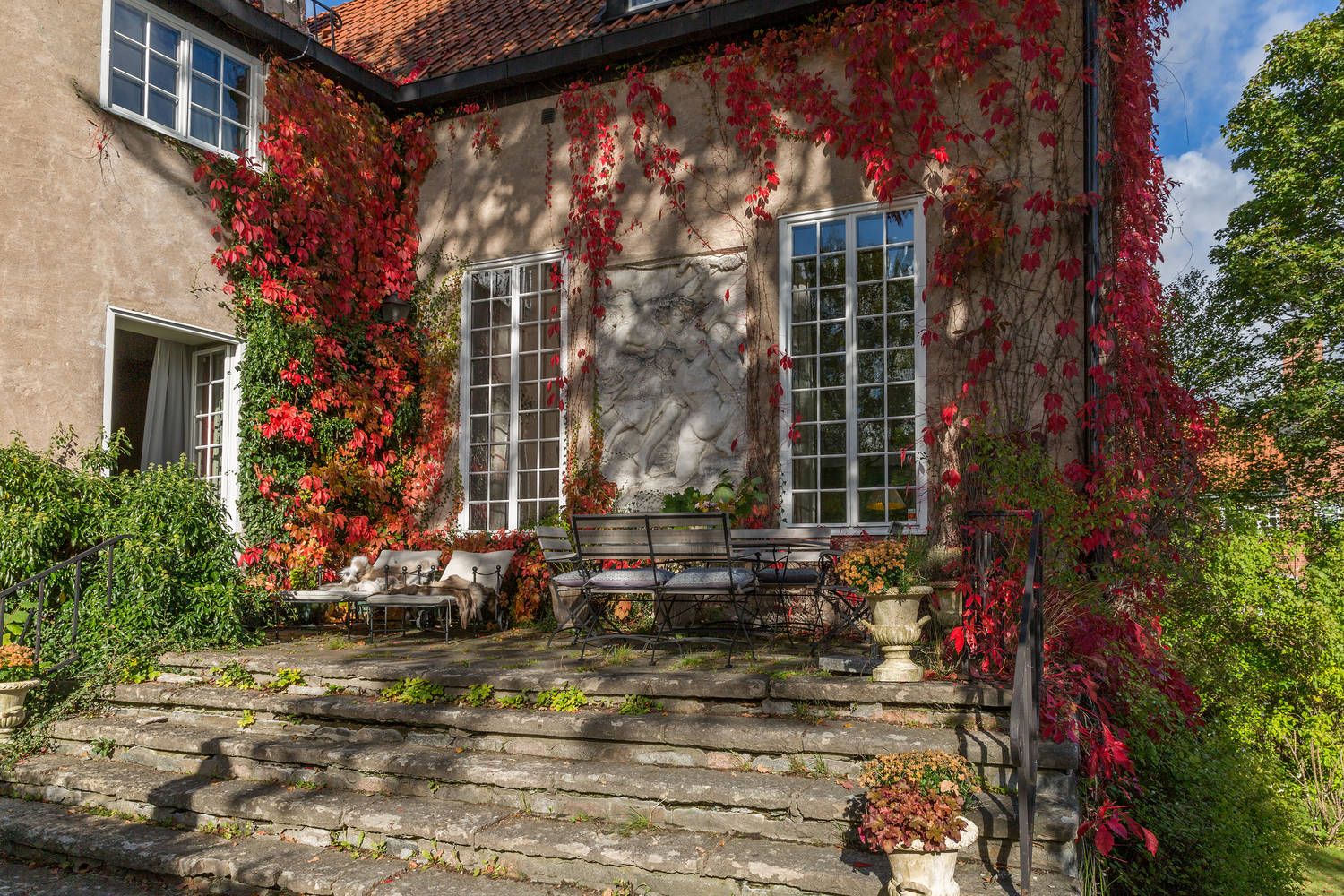#10794. Historical Facade with Seasonal Natural Decoration

This country house represents a magnificent example of harmonious integration between architecture and nature. The facade of the building, likely of historical origin, with its red tiled roof, is adorned with stunning natural decoration of red foliage from climbing plants (presumably Virginia creeper). These plants create a living, seasonally changing appearance, especially vibrant during autumn.
Architecturally, the house features clear proportions and symmetrically placed window openings. Particularly notable are the large windows with small panes in white frames, which create a contrast with the textured beige plaster walls. This type of window is characteristic of European architecture, giving the building a classic, somewhat aristocratic appearance.
The terrace in front of the house is formed by stone steps and a platform with garden furniture, creating a transitional space between interior and exterior. The metal elements of the garden furniture resonate with the overall aesthetic of the building, emphasizing its rustic character.
For modern application in facade design, several techniques can be borrowed: the use of climbing plants as living, ecological decoration; maintaining contrast between wall structure and window frames; creating transition zones between house and garden through terraces and open areas. Vertical landscaping not only decorates the house but can also serve as natural thermal insulation, protecting walls from overheating in summer and cooling in winter.